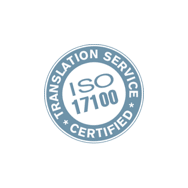What are the oldest languages in the world?
Once upon a time, human beings communicated in gestures and grunts. You’d point at a deer, grunt, and mimic throwing a spear. That’s all it would take.
Somewhere along the lines, things changed. The grunts became more intricate and, after quite some time, evolved into fully fledged languages.
But the evolution of language was a slow and organic process of many neologisms. It’s therefore borderline impossible to actually pick out precisely where words come from, or when language first started.
Likewise, it’s almost impossible to say for certain which languages are the oldest. To keep things simple, we’ve evaluated languages based on the first appearance of a written text. Here are a handful of our favourite languages that are amongst the oldest in the world.
Tamil — c. 2300 years old
While Tamil is far from the oldest languages on our list, it is certainly one of the most widely spoken. An official language of Sri Lanka, Singapore and two Indian states, Tamil is still spoken by approximately 70 million people across the world.
Tamil has one of the oldest literary canons of any language in the world, with the earliest piece of Tamil writing, Sangam literature, dating to approximately 300 BCE.
Unlike all the other languages on this list which have fallen in and out of popular usage, Tamil has been constantly spoken since 300 BCE. Over the centuries it has continued to develop and evolve and eventually became what it is now: modern Tamil.
Aramaic — c. 3000 years old
Aramaic is easily a contender for one of the oldest languages in the world. It began as a popular language for worship and religion in Ancient Syria, with Aramaic script a starting point for the development of both the Hebrew and Arabic alphabets.
However many dialects of Aramaic survive to this day. Modern Aramaic is divided across Christian, Jewish and Mandean communities, with some older dialects still used in Eastern Christian churches.
Aramaic could well be one of the hardest languages in the world, or at least on this list, purely due to how few people still speak it.
Sanskrit — c. 4000 years old
Introducing the liturgical language of Hinduism, Buddhism and Jainism, the classical language of India and one of, if not the, oldest Indo-European language: Sanskrit.
The first written record of Sanskrit comes in the Rigveda, a collection of Vedic Sanskrit hymns, written in part during the 2nd millennium BCE.
The Nasadiya Sukta is one of the most well-known hymns and addresses on the origin of the universe. You can find the English translation here.
Amazingly, unlike most ancient languages, Sanskrit remains alive and spoken as a native language. Based on the 2011 Census of India, Sanskrit is spoken by just under 25,000 people in India. Organisations like Samskrita Bharati are working to revive the language and rejuvenate the surrounding culture.
Egyptian — c. 4700 years old
Egyptian is a language so ancient that it makes almost everything else on the list look like a trendy blip.
With complete texts dating back to 2600 BCE and proto-hieroglyphs appearing some 600 years prior, Egyptian is a truly ancient language. The most recent usage of hieroglyphics appears on a temple gate post in Philae in 396 CE. This was around the time that written Tamil records start to turn up!
Hieroglyphics were used in parallel with the hieratic script with the former used for formal and the latter used for everyday purposes. You could take a course, to learn to read ancient Egyptian hieroglyphs.
However, it’s almost impossible to learn a new language such as Egyptian. With no record of Ancient Egyptian vowels, we have little to no knowledge of what Egyptian sounded like. Coptic Egyptian (the very latest version of the language), is still used in some Egyptian Christian liturgy. However it is no longer spoken.
Sumerian — c. 5000 years old
Dating to at least 3500 BCE, Sumerian could well be the oldest written language in the world. The earliest evidence of Sumerian is on a limestone tablet known as the Kish Tablet, found in Iraq.
Sumerian was eventually succeeded by Akkadian, with the latter becoming the new vernacular language. However, according to Britannica, Sumerian continued to be used for religious, scientific and sacred texts until roughly the 1st Century AD.
Sumerian might not be the best language to learn, given that it’s close to dead or extinct. But the ‘Eme-gir’ and ‘eme-SAL’ dialects remain depicted in some hymns and chants.
Conclusion
It’s always helpful to brush up on your language facts, and get an idea of where our languages have come from.
But, however interesting, the oldest languages in the world probably aren’t top of your list to learn!





